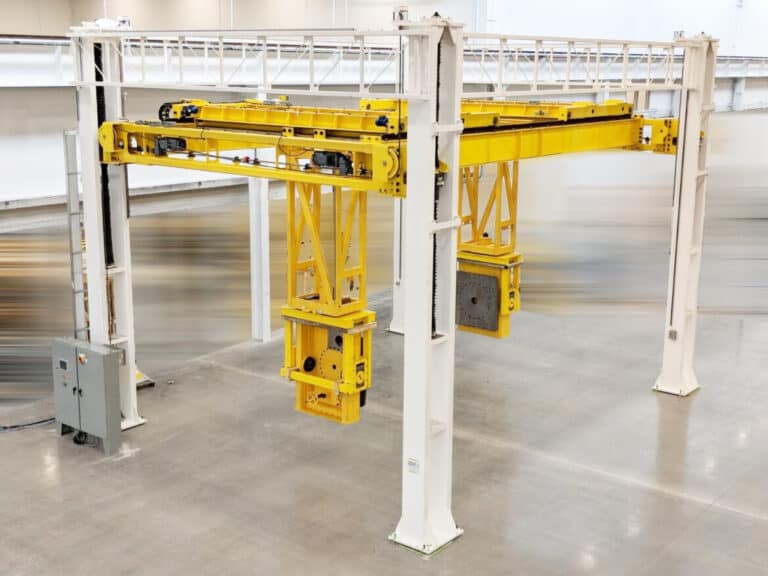Comprehending the Inclusions of moving and Freight Forwarding on the planet of Domestic and Global Shipping
Guiding through the complexities of moving and Freight forwarding can be tough. Both processes entail distinct procedures and demands that are essential for effective transport. Comprehending the differences in logistics, documentation, and threat administration is important for individuals and organizations alike. This understanding can greatly impact the efficiency and security of deliveries. Numerous are uninformed of the details parts that influence the general experience and end results. What factors should one think about to ensure a smooth transition?
The Basics of moving and Freight Forwarding
moving and Freight forwarding are fundamental components of the global logistics market. They facilitate the transfer of goods and personal items across residential and worldwide boundaries. moving mainly involves the moving of individuals or households, including property and commercial needs. It usually includes packing, loading, moving, and unpacking products at the location. On the other hand, Freight forwarding is concentrated on the delivery of goods, commonly wholesale, utilizing various transport settings, such as air, sea, or land.Freight forwarders act as middlemans, collaborating logistics to guarantee prompt shipment while navigating with facility laws and customs treatments. Both procedures require careful planning, organization, and communication to ensure performance and lessen interruptions. Recognizing these basics is important for any individual included in logistics, as they prepared for advanced facets of shipping and transportation management.
Trick Components of Freight Forwarding Providers
Freight forwarding services encompass several important components that ensure smooth transportation of goods. Trick obligations of Freight forwarders include taking care of logistics, coordinating deliveries, and managing customizeds clearance. Furthermore, comprehending necessary shipping paperwork is vital for conformity and effective motion of cargo.
Freight Forwarder Responsibilities
A dependable Freight forwarder plays a crucial role in collaborating the transport of goods, guaranteeing that deliveries are taken care of efficiently and in compliance with guidelines. Their responsibilities include numerous vital tasks, including choosing perfect transport paths, working out Freight prices, and taking care of logistics. They work as middlemans between providers and shippers, ensuring that cargo is effectively packaged and labeled for safe transit. Additionally, Freight forwarders track shipments, providing updates to clients regarding the condition and expected delivery times. They also evaluate and take care of dangers related to transportation, suggesting insurance policy choices as required. By assisting in interaction and paperwork, Freight forwarders enhance the delivery process, decreasing prospective hold-ups and improving overall supply chain performance.
Delivering Paperwork Essentials

Comprehending Custom-mades Clearance and Documents
Accurate documentation is important in the custom-mades clearance procedure, as it assures conformity with different policies. An introduction of personalizeds laws highlights the complexities encountered by carriers and Freight forwarders. Usual clearance obstacles can substantially influence shipment timelines and expenses, making understanding this aspect essential for efficient logistics.
Relevance of Accurate Documentation
Guiding via the intricacies of global delivery needs a keen understanding of personalizeds clearance and the essential role of paperwork. Exact paperwork is crucial for making certain that deliveries abide by policies and reach their locations without delays. Effectively prepared records, including bills of lading, commercial billings, and packaging checklists, facilitate smooth interactions with personalizeds authorities. Errors can result in delivery delays, penalties, or perhaps confiscation of goods. Additionally, comprehensive paperwork aids in monitoring shipments and resolving conflicts. Businesses involved in moving and Freight forwarding must focus on meticulous documents techniques to browse the complex landscape of worldwide delivery effectively. This diligence not only improves operations but also improves customer contentment by making sure prompt distribution.
Customizeds Rules Summary
Guiding personalizeds regulations is a vital facet of global trade that directly influences the success of moving and Freight forwarding operations. Effective custom-mades clearance calls for an understanding of numerous regulations, including tolls, obligations, and import/export constraints. Accurate documents is vital, as it assures conformity with legal requirements and assists in the effective activity of items throughout boundaries. Key documents often include industrial invoices, packing listings, and expenses of lading, which supply comprehensive details regarding the delivery. In addition, customs brokers play an essential function in guiding intricate guidelines, working as intermediaries in between shippers and personalizeds authorities. By maintaining comprehensive expertise of customizeds procedures, companies can substantially reduce delays and minimize prices related to international delivery.
Usual Clearance Difficulties
Various challenges can emerge throughout the personalizeds clearance process, commonly making complex the movement of goods throughout boundaries. One significant problem wants paperwork, which can lead to hold-ups and charges. Importers and exporters need to guarantee all required paperwork, such as invoices, packing lists, and certifications of origin, is accurate and total. Furthermore, discrepancies in evaluation can trigger analysis from custom-mades authorities, causing additional obligations or evaluations. Language barriers might likewise posture difficulties, as miscommunication can result in misconceptions regarding regulations. Adjustments in customs guidelines can develop confusion, necessitating consistent alertness by carriers. Eventually, getting rid of these clearance challenges requires comprehensive preparation and a clear understanding of customizeds requirements to assist in smooth worldwide transactions.
Product Packaging and Identifying Demands
Typically neglected, product packaging and labeling requirements play an important function in the shipping procedure, ensuring that goods are protected and easily identifiable throughout their trip (shipping overseas). Proper product packaging safeguards items from damages throughout transit, while additionally assisting in effective handling and storage space. Utilizing suitable products, such as bubble wrap, foam, or durable boxes, can protect against damage and loss.Labeling is equally crucial. Clear and exact tags convey important information, consisting of the destination, dealing with instructions, and contents. Tags must comply with laws particular to residential and global delivery, which might include unsafe products recognition or personalizeds declarations.Moreover, standardized labeling techniques streamline the tracking process and enhance overall logistics performance. By adhering to packaging and labeling demands, services decrease the risk of delays, damage, or misdelivery. Eventually, these practices add substantially to the success of moving and Freight forwarding operations, ensuring a seamless delivery experience for all celebrations included
Tracking Shipments: Importance and Techniques
Reliable packaging and labeling established the foundation for successful shipment administration, yet tracking shipments is similarly important in the delivery process. Delivery monitoring offers real-time presence, which helps services and consumers monitor the progress of their explanation goods. This openness improves consumer satisfaction, considering that customers can stay notified concerning distribution timelines and any type of possible delays.Several approaches help with effective tracking. Barcode scanning is a typical strategy, utilizing special identifiers to check plans throughout their journey. Furthermore, general practitioner modern technology allows accurate area tracking, permitting timely updates and improved logistics management. Lots of shipping firms currently offer digital platforms and mobile applications that offer individuals with simple access to tracking information.The relevance of delivery tracking can not be overemphasized; it reduces the risk of shed or harmed products, boosts functional performance, and fosters count on between shippers and receivers. As a result, integrating efficient tracking methods is vital for effective residential and worldwide shipping procedures.
Insurance coverage Options for Your Goods

Securing insurance coverage for items in transit is a vital consideration for organizations and individuals alike. Insurance choices imp source differ based upon the kind of delivery, worth of goods, and particular threats involved. Typical types include service provider responsibility, which covers loss or damage while en route, and full-value insurance policy, offering substantial protection for the overall value of the goods.Shippers may additionally consider marine insurance coverage for international deliveries, safeguarding versus dangers related to sea transportation. It is necessary to analyze the particular demands of the delivery and assess the terms of any type of policy.Furthermore, understanding exemptions and restrictions is crucial to stay clear of possible spaces in protection. Carriers need to involve with insurance policy professionals to check out customized services that fit their one-of-a-kind situations. Eventually, buying the right insurance policy can mitigate monetary dangers and supply satisfaction during the shipping procedure.
Choosing the Right moving and Freight Forwarding Service
When selecting a moving and Freight forwarding service, it is vital for organizations and people to very carefully examine their particular needs and priorities. Aspects such as the quantity of products, destination, and timeline play a considerable function in this decision-making procedure. Investigating different suppliers is a good idea; comparing their services, rates, and client reviews can disclose useful insights.Additionally, it is needed to consider the experience and knowledge of the solution supplier in dealing with details kinds of cargo, specifically for worldwide shipments that might involve customizeds clearance. Transparency in pricing, consisting of any kind of surprise charges, ought to also be scrutinized.Furthermore, evaluating the level of customer support provided is necessary, as timely communication can mitigate concerns during transit (lcl shipping). Verifying the availability of insurance options assures that items are shielded throughout the delivery procedure. By taking these individuals, organizations and actions can make informed options that align with their logistics demands
Regularly Asked Questions
What Sorts Of Item Can Be Shipped Worldwide?

How Do Delivery Costs Range Various Providers?
Shipping prices vary substantially in between providers because of variables such as solution rate, freight kind, distance, and additional solutions supplied. Each provider's prices model shows these variables, influencing general shipping expenses for customers.
Can I Ship Hazardous Products or Perishables?
Shipping hazardous products and perishables goes through stringent guidelines. Providers usually call for certain packaging, labeling, and documentation. Carriers should assure compliance with global and local regulations to avoid fines and guarantee risk-free transport.
What Should I Do if My Delivery Is Delayed?
When confronted with a shipment hold-up, one ought to initially contact the service provider for updates. Review any kind of notices got, analyze different solutions, and keep all parties notified regarding the circumstance to lessen disturbances.
Are There Weight Limits for Shipping Containers?
Weight limits for shipping containers vary depending upon aspects like container dimension and delivery laws. Normally, basic containers have a maximum gross weight of around 30,000 to 32,000 kgs to assure risk-free transportation and handling. In comparison, Freight forwarding is concentrated on the delivery of items, usually in bulk, making use of various transport settings, such as air, land.freight, or sea forwarders act as middlemans, working with logistics to assure timely delivery while navigating via facility policies and customizeds treatments. Trick responsibilities of Freight forwarders consist of managing you can try here logistics, collaborating shipments, and dealing with personalizeds clearance. A dependable Freight forwarder plays an essential role in collaborating the transport of products, ensuring that deliveries are handled effectively and in compliance with policies. Reliable product packaging and labeling set the foundation for effective shipment administration, but tracking deliveries is equally necessary in the shipping process. Several delivery firms currently use electronic systems and mobile applications that give individuals with easy accessibility to tracking information.The value of delivery monitoring can not be overemphasized; it decreases the risk of lost or harmed items, improves operational effectiveness, and cultivates count on in between receivers and shippers.